It doesn’t require much of a breeze.
But when the wind blows just the right way across the woodsy riverside land that sits between the East and Brunswick Rivers, straddling Georgia Highway 17, the American flag at the entrance to Satilla Shores extends to a state of full attention.
It was in this neighborhood, cloistered under a canopy of live oak branches dripping with Spanish moss, that Ahmaud Arbery was killed in February 2020. On Wednesday, a jury of 11 white and one Black Americans convicted father and son Gregory and Travis McMichael and their neighbor William “Roddie” Bryan of murder and other charges connected to Arbery’s shooting death; Travis McMichael was found guilty on all counts and the other two men on a majority of the nine with which they were each charged. The decision followed a nearly three-week trial—and more than a year during which the murder served as one of the flashpoints in the national conversation about race and justice in America.
Read more: 3 Men Found Guilty of Felony Murder Charges in Trial Over Killing of Ahmaud Arbery
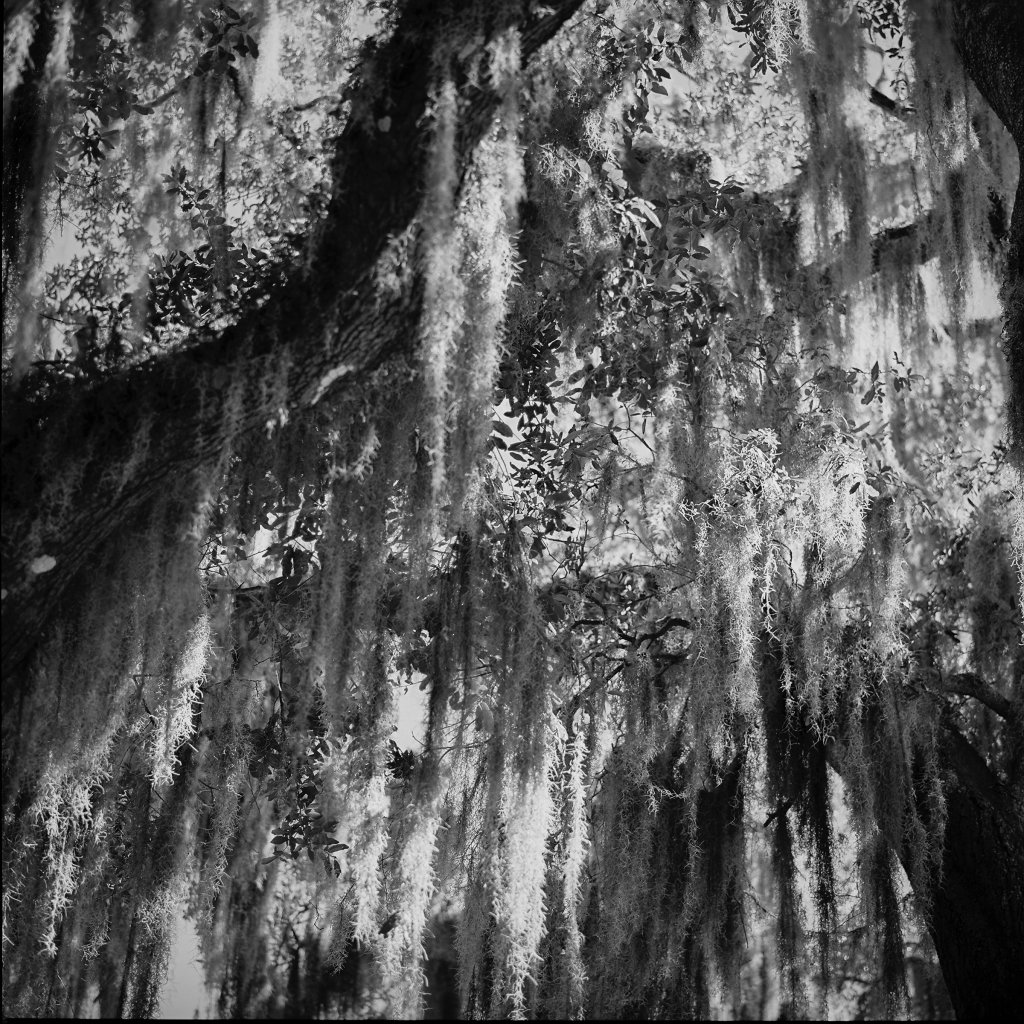
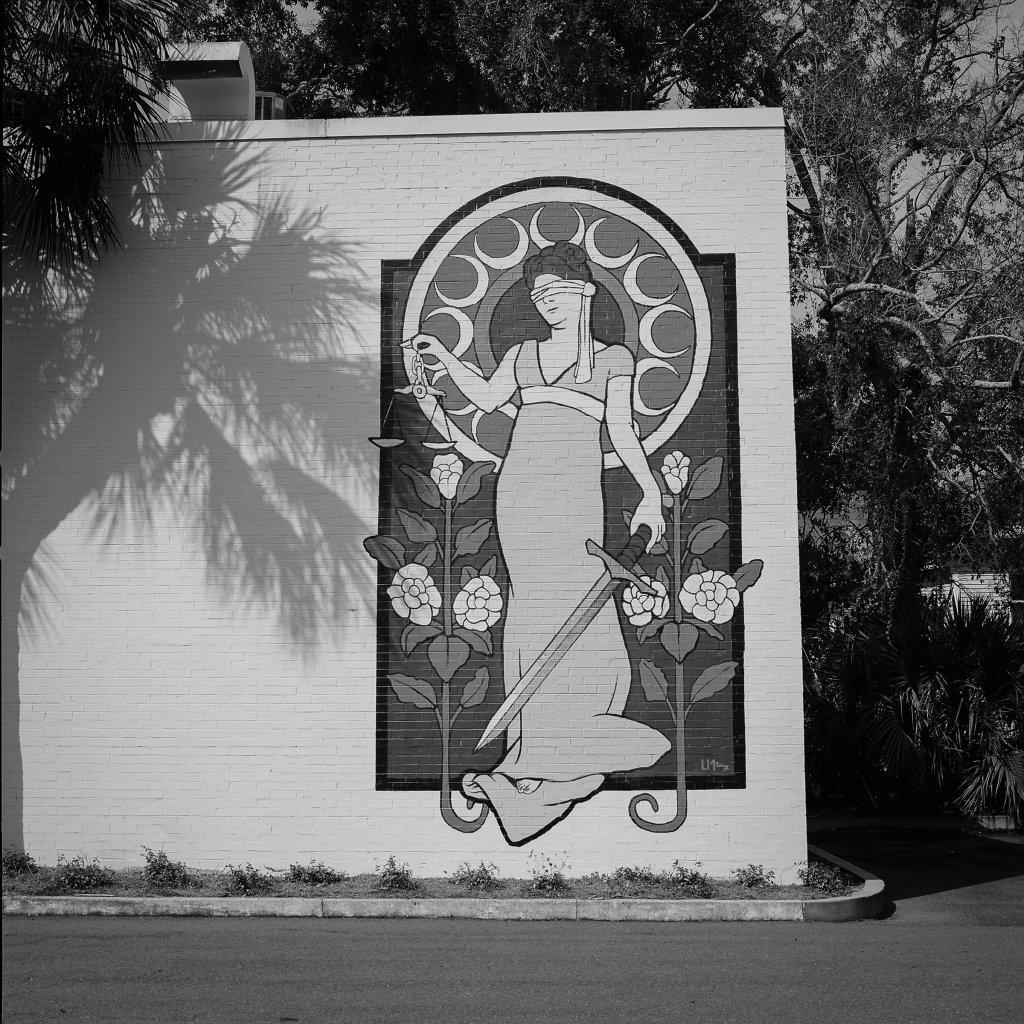
Even with the verdicts in, other questions remain unanswered, ones that have been hanging over Glynn County, Ga., in the time since Arbery died: What does it mean for this place that this happened here? What are the real implications of the freedom and equality this county—this country—insists it so values? What happened in Glynn County will, for many, feel eerily familiar; so many quieter crises have flared up in other communities and either fizzled or exploded. But some of the answers to these questions lie here, in what has and has not changed since Ahmaud Arbery took a Sunday afternoon jog and was shot dead about two miles from his home.
“We’re pushed [into] the spotlight,” says Cornell Harvey, 68, mayor of Brunswick, the city to which global media and protesters flocked for the trial. It’s a majority-Black coastal city of about 16,000 people located in majority-white Glynn, which is home to about 85,000 and went 61% for Donald Trump last year. Satilla Shores is one of many subdivisions full of single-family homes that sit just outside Brunswick, in an unincorporated part of the county.
“When things happen, it always depends on what you do once it happens,” Harvey says. “I realize history has seized us here. I realize that. Reading history books 10 years from now, it will be about this place.”
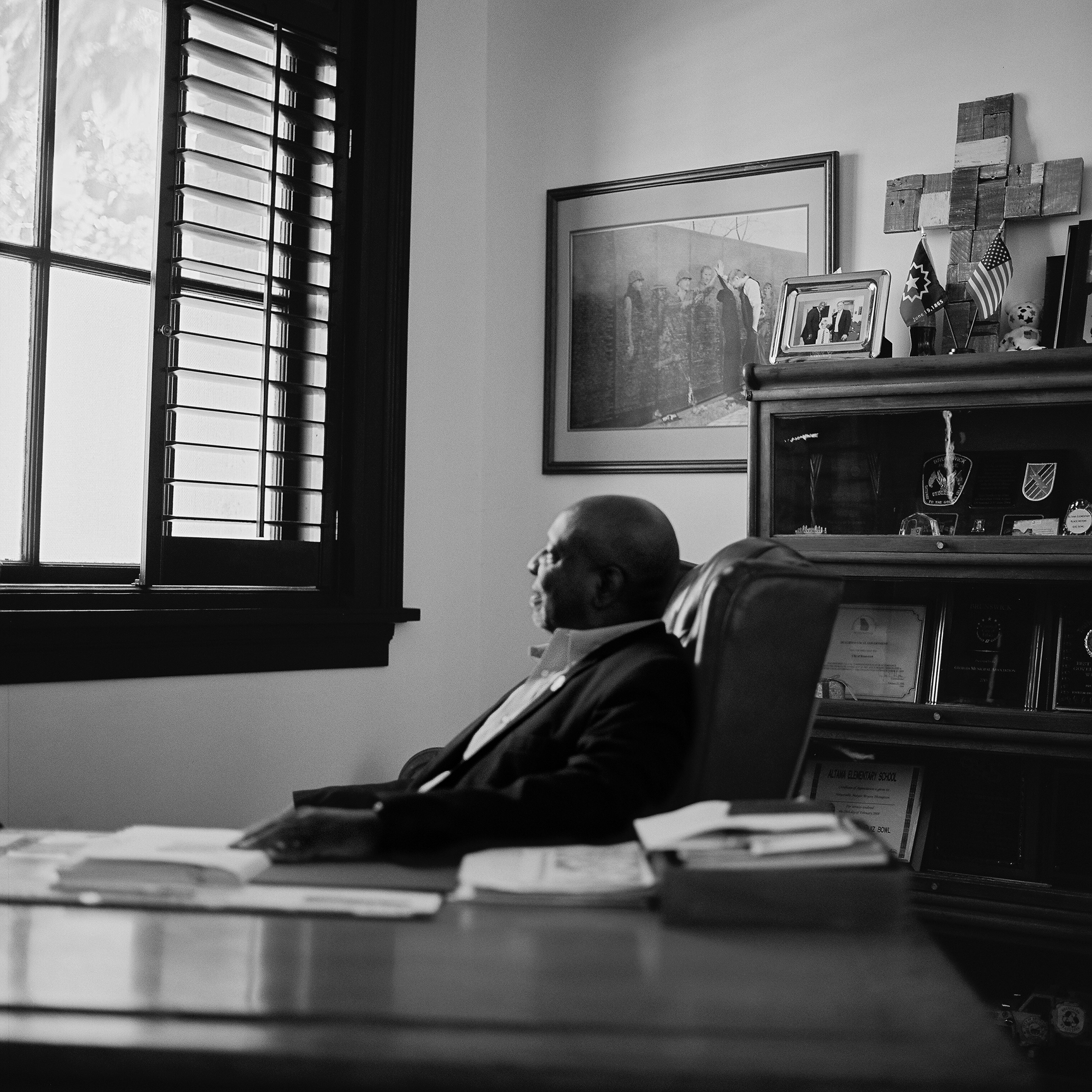
And what is this place? It is a place of contrasts and closeness. It is here Ahmaud Arbery could quickly jog from his own mixed-race neighborhood, where the concrete on many of the driveways still appears new, to the overwhelmingly white enclave of Satilla Shores, where private riverfront docks can be found in the backyards behind what are mostly larger homes. The colors that fill the sky at sunset over Glynn County’s many waterways have inspired poetry; it is also home to four of the 23 federal Superfund sites in Georgia. It’s a place where Arbery is deeply mourned and where in death he has been mocked. And inside Brunswick’s ornate Old City Hall, where Cornell Harvey’s office is situated, it’s a place where the mayor insists that change is already here.
A retired military man with a friendly face and cue-ball-clean head, Harvey—the city’s first Black mayor—is a cheerful town booster. The military took him to postings abroad, but after he retired from the Air Force in 2000 he returned to his childhood home of Brunswick, alarmed by population loss and the number of shuttered stores. By many measures, the popular two-term mayor has been successful: Brunswick now boasts new loft apartments billed as the “epitome of luxury downtown living,” as well as a hip local brewery and trivia Wednesdays down the street at Tipsy McSway’s.
Read more: Two Rich Men Decided to Fund a Failing City. Some People Say They Made It Worse
Still, this remains a place of stark inequality. In the city, nearly 35% live in poverty while in the county 15.4% do the same, according to Census data. The differences in the lives of Black, Latino and white residents in all of Glynn County are even starker. About 12% of white people living in Glynn County, nearly 40% of Latino residents and nearly 29% of Black citizens live in poverty. To get from Brunswick to mainland county subdivisions like Satilla Shores or to the most populated of Glynn’s famed Golden Isles, St. Simons, one has to navigate Georgia’s longest bridge or a string of causeways. Melissa Trussell, an economist at College of Coastal Georgia in Brunswick, says that while many area jobs are on St. Simons Island—with its hotels, resorts and golf courses, a place also home to many wealthy retirees—there is no public transportation in Glynn County and there are adults in Brunswick who have never seen the ocean.
“The island is the richest zip code in Georgia, one of the richest in the country,” Trussell says. “And then you come back across the four-mile causeway and then you are in Brunswick, which is one of the poorer zip codes in Georgia. That gap in socioeconomic and demographic differences is almost unbridgeable.”

In February 2020, when Travis McMichael shot and killed Arbery, it was for Brunswick and Glynn County alike a relatively prosperous time. Soon, life grew even more complicated, just as it did in most communities. Here, where mask-wearing is now scarce, the pandemic and related job losses pushed unemployment to a high of just over 15% in Brunswick and nearly 17% in all of Glynn County by April 2020. (Both figures now sit under three percent.)
“People around here don’t necessarily understand their rights, don’t know the disparities that they’re living in, don’t know the inequities that exist,” says Shemeka Frazier Sorrells, 41, who was born and raised here and later, during the pandemic, bought a second home in Brunswick. She and her husband planned to use it for getaways but after Arbery was killed the couple, who are Black and able to work remotely, decided to move here full-time to get involved in the community. Frazier Sorrells eventually connected with the Rev. John C. Richards Jr., 43, and Elijah “Bobby” Henderson, 45, and a few others to form an organization called A Better Glynn.
Some of the city’s younger activists view Harvey as too supportive of the establishment to be an agent of certain types of change, but when Arbery was killed, the mayor seemed to understand part of the assignment. (The death happened outside the city limits, but as a local official Harvey still found himself facing questions from people around the world.) Rumors and sometimes vicious debate were flying. This was going to be known as a place where a brutal incident left a young Black man dead on the street.
“People around here don't necessarily understand their rights”
Brunswick needed to find a way to publicly reject that reputation, Harvey says. After a discussion with a state-wide committee focused on the fate of Georgia’s many Confederate monuments, Harvey decided Brunswick needed to explore removing one situated in the city’s picturesque Hanover Square since 1902.
“That statue doesn’t depict who we are,” Harvey says. “History allows us to relive the past in the present. O.K.? Well, a number of us don’t want to relive that past. And, we want to move forward. We want the world to see us in a different light than that.”
When a local committee debated the statue’s fate and took comments at public meetings—virtual meetings, due to the pandemic—few came forward to formally defend it. But the statue did have people on its side: One man submitted written comments describing Abraham Lincoln as hypocrite and a traitor. The group eventually voted in August 2020 to recommend that the city keep the statue but add signs describing Black “soldiers” on St. Simons during the Civil War. Critiques of Harvey and his support for removing the statue showed up in letters to the editor of the local paper, the Brunswick News. Another Glynn County man, who declined to comment when contacted by TIME, filed suit to stop the statue’s removal. The state’s appeals court threw out that suit months before the trial over Arbery’s killing.
In June 2020, as the country reacted to the murder of George Floyd, the statue was vandalized by someone with a can of black spray paint, leaving behind the letters “BLM” written diagonally near the base. City workers tried to remove the writing, but most of the paint would not budge. This year, a private citizen whom Harvey would not identify called the mayor’s office with a request. He wanted to do something to protect the statue. Harvey gave the resident the go-ahead. Meanwhile, amid an ongoing uptick in public-meeting attendance after Arbery’s death, the city commission met, informally breaking with its signup norms and hearing from every single person who wanted to speak. In November 2020, the Brunswick City Commission voted 4-1 to remove the statue, returning it to the United Daughters of the Confederacy pending the status of court cases that have since been decided in the city’s favor.
For now, the lone confederate soldier situated atop a white marble pillar in Brunswick’s Hanover Square sits wrapped in a protective plastic tarp, held in place by silver duct tape. When the sun shines in the right spot, the soldier’s outline is still visible, transforming the tarp into something like a pall. Of late, someone has added two stickers marked by a juicy-looking cartoonish peach. I Secured My Vote, it reads. I’m a Georgia voter.


On St. Simons Island, the trees and sky are Bob Ross-perfect. I think about how Arbery had loved to exercise outdoors. In a place like Glynn County, exercise is one of a few forms of entertainment.
As small private planes buzz overhead, Josiah “Jazz” Watts, 50, a cousin of Arbery’s who is Black and works in land and cultural preservation, and his nearly lifelong friend Jim Barger Jr., 50, a white lawyer who lives on the island, explain that this is what happens on what they call “Georgia-Florida weekend.” The annual football game between the Universities of Georgia and Florida draws rich fans to the area; the beautiful vistas and the evidence of extreme wealth make our conversation more jarring.
“I absolutely think of it in terms of a lynching,” Watts tells me about his cousin’s death. “Trucks, guns, you know, chasing, hunting. The definition of a lynching doesn’t necessarily have to encompass those things but they were all there. Who in the world would even think that that would even be something justifiable, right?”
On this island, Barger had once lived in a happy cloud. In what happened to his friend’s cousin, he realized that he is free to walk anywhere in this town while “Ahmaud couldn’t run across the street without getting shot,” he says. He thought about the way that his faith calls on him to love his neighbor as himself. Barger—deciding to make use of the privilege of being listened to—went on to take an active role in ensuring national press coverage of the case and pushing elected officials for action. “[Officials], I pay their salaries. And they’re there to protect me. And to know that I feel protected, and they probably would protect me and my family, but they won’t protect my neighbors—I felt ashamed.”
But even if the way Barger looks at this place changed, what has happened here is indelible.
In the 1700s, some of Watts and Arbery’s shared ancestors arrived in the region in a group of enslaved families brought to Sapelo Island to cultivate rice, cotton and indigo to enrich their white slaveholders. On his father’s side, Arbery was also the direct descendant of Bilali Mohammed, an enslaved man originally from West Africa brought to the island after first being enslaved in the Caribbean, according to the team of students behind Atlanta Public Radio’s Buried Truths podcast. The students, lead by Hank Klibanoff, director and co-teacher of the Georgia Civil Rights Cold Cases Project at Emory University, were able to confirm that lineage by hunting through Census and other records after a detailed tip shared by Barger, something of a local-history buff. Mohammed—whose slaveholder represented Georgia in the U.S. Congress—was an important source of African agricultural and engineering techniques befitting a climate where rice will grow; that knowledge was key to making Brunswick a prosperous center of economic and cultural activity. Mohammed left behind a 13-page Arabic-language manuscript that is today in the Hargrett Rare Book and Manuscript collection at the University of Georgia.
Glynn is also about an hour’s drive south of where General William Tecumseh Sherman ended his infamous march across Georgia to the sea, near the end of the Civil War. There, Sherman issued Special Field Order Number 15, assigning to Black families—the formerly enslaved and those who fought for the Union—up to 40 acres each, carving up the land that lay between Charleston, S.C. and Jacksonville, Fla., extending 30 miles west of the water. It also set aside all but one sea island for the formerly enslaved. That included Glynn County’s Sea and St. Simons islands. Field Order 15, effectively nullified when Lincoln was assassinated, was about as close as the country ever came to anything like reparations. But the formerly enslaved men who had suggested some of the content of the order wanted the islands for more than compensation. They doubted that the white Americans who until just weeks before believed themselves legally empowered to rape, beat, kill and sell them would ever allow Black people to prosper in their vicinity. They were proven right.
"I want any sign of progress. I have to admit that it's mighty hard to find."
The McMichaels and Bryan both descend from families that fought for the Confederacy in the Civil War, Klibanoff’s students also found.
“Even after all that history that we know and the Confederacy tie, I really separate myself from that taking us to any presumption that they were racially motivated,” says Klibanoff, 72, who is white and from Florence, Ala. “But I’m really comfortable saying they were racially conditioned, racially conditioned to fear [Arbery].”
Read more: Unreasonable Fear Is Killing Black Men in America—And There’s No Justification For It
This is Southeast Georgia, a place where living elderly people were told stories as children of family members dragged away and lynched in Glynn’s not so distant past. Then there’s the stuff even the young know. About three hours down the road in Sanford, Fla., is where 17-year old Trayvon Martin was killed in 2012. Jordan Davis, 17, was shot and killed not long after that, about an hour South of Brunswick, in Jacksonville, Fla. (His mother, Lucy McBath, now represents Georgia in Congress.)
Even with all of that, some—particularly white people—have been given by what followed a sense, however small, of hope.
Klibanoff, for example, looks back to 1964, when a white man went on trial for murdering civil rights activist Medgar Evers, and the Governor of Mississippi walked into the courtroom and shook the defendant’s hand just before the all-white and male jury went in to deliberate. (The man was acquitted, then convicted at a later trial in 1994 by a jury with eight Black and four white members.) In 2020, Georgia Gov. Brian Kemp, a Republican seen as an enemy by voting rights advocates around the country, described Arbery’s death as “absolutely horrific” and said “Georgians deserve answers.”
“So is that progress? Frankly, I think it is,” says Klibanoff. “But, I’m a Southern white guy who’s looking for any sign of progress. Okay? I want any sign of progress. I have to admit that it’s mighty hard to find. And that’s all I’m left with.”
Sometimes change arrives in moments like Kemp’s press conference. Other times, it arrives in the bravery of a Black teenager willing to walk around different neighborhoods in his hometown.
On the day before Halloween, sunny and cool, local activists Henderson, Richards and Jason Vaughn, 40, Richards’ brother, gather in the parking lot outside Brunswick High School. Vaughn is an African American history teacher and coach who not so long ago drilled Ahmaud Arbery on the football team; he was the one who told his brother about Arbery’s death, deeply distressed by the unfamiliar portrait of Arbery being painted by police and reporters. In a small city, those kinds of ties are common, and are part of the reason it took two and a half weeks to seat a jury in the trial of the men accused of murdering Arbery.
Read more: Ahmaud Arbery and America’s White Juror Problem
But on this day in late October, about a dozen students, all of them Black boys just a bit younger than Arbery when he died, are here, out of bed well before 10:00 am. Today’s project: knock on Brunswick doors to share basic info about voting in the upcoming election.
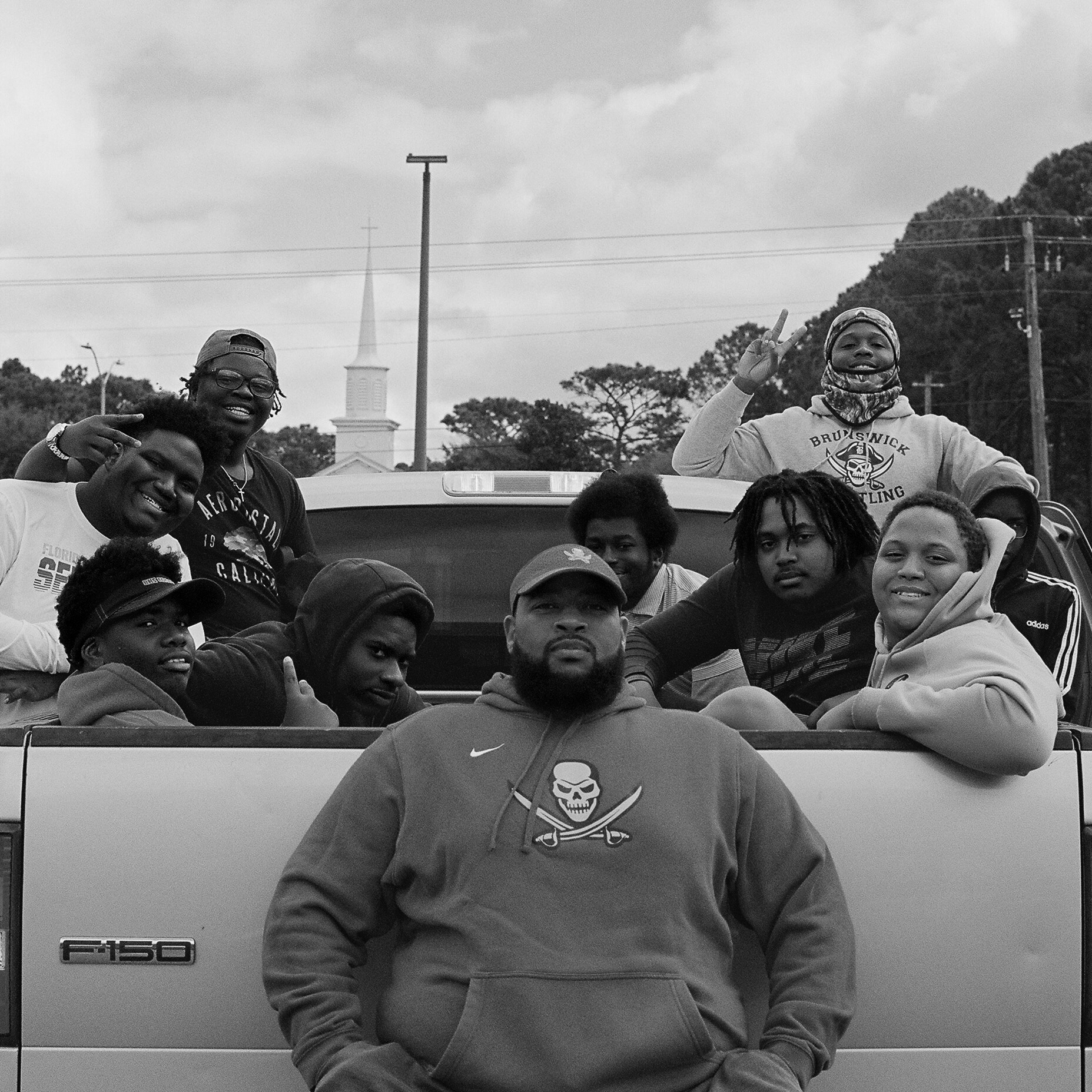
The organization A Better Glynn is working on what activists see as some of Glynn County’s chief problems. Among them: limited civic engagement among a population where large swaths feel disempowered. Richards, who is also a lawyer, and Frazier Sorrells sat on the committee Harvey put together to decide the future of the Confederate monument in Hanover Square. A Better Glynn is also working with the Black Voters Matter Fund, a group that came to national attention for its role in helping to mobilize Georgia’s Black vote in 2020 and turn that long red state blue.
“Much like Ferguson, Mo., Brunswick/Glynn County is an amazing example of a community turning its pain into power,” Cliff Albright, a co-founder of Black Voters Matter, says.
Already, in June 2020, A Better Glynn had notched a success in pushing the county to hire a new police chief, someone from outside the embattled department; people from the group showed up to every public forum on the search for a new chief. Ultimately Jacques Battiste, a former FBI man, became the first Black person to serve as county police leader. Then, in November 2020, Glynn County voters pushed longtime District Attorney Jackie Johnson out of office, electing Keith Higgins, a local lawyer who ran as an Independent. The elder McMichael had worked for Johnson, a Republican, as a DA’s office investigator. Among the first people he called after the shooting was Johnson. Prosecutors have alleged in court documents that Johnson instructed officers not to make an arrest the day they found Arbery dying on the street. More than one person I spoke to in Brunswick pointed to the election outcome as evidence that few people around here were happy with the way the Arbery case had been treated. (This year, Johnson was charged with obstructing a police officer’s work, a misdemeanor, and a felony charge of violating her oath of office, all in connection to Arbery’s death. Johnson has denied any wrongdoing.)
Read more: Atlanta’s First Black Female District Attorney Is at the Center of America’s Converging Crises
Walking with Richards and three teenagers who attend Arbery’s old school, through a mostly Black community in North Brunswick called College Park, I ask the students about their own political engagement. Some didn’t even know their city had a Confederate monument, but the team members have been active in Vaughn’s efforts to unify the members of the multi-racial football team—the school is almost equally Black and white—to engage in community service, and in frank conversations with one another.
Vaughn, who looks like a teddy bear in sports gear, tells me later that those conversations have, he thinks, had an impact. There were kids in tremendous pain after Arbery was killed. Some players were afraid to run outside, something they needed to do to keep fit when most gyms were closed due to the pandemic. Vaughn himself has been followed by a white neighbor, he says, and has had police called on him by another while out walking in his own Glynn County neighborhood. Helping the students required the coaching staff to first speak openly about a rarely discussed, if not incendiary, set of topics among men in America: feelings, racial discrimination, human and civil rights.
“We opened up to each other like we never had before,” Vaughn tells me. We’re sitting in Selden Park at sunset, a 35-acre space where in 1903 a school and later a park were opened after being donated to Brunswick by a wealthy white philanthropist for use by Black residents. It was once home to the only pool where Black people were allowed to swim in Brunswick. As children, Vaughn and his brother took swimming lessons here for 25 cents a session. Restoring recreation programs, which have been moved outside city limits, to a place hard for many Brunswick kids to reach, is on A Better Glynn’s priority list. “[And] we said if we can come together as coaches, it’s time to bring our players together.”
The coaching staff created “Talk About It Tuesday,” breaking kids into football position groups to create small discussion circles and opening the floor to talk about Arbery and anything else needed. “It was like a tremendous light hit our team,” Vaughn says.
Now, almost two years in, players who would have never interacted off the field are going to one another’s homes, Vaughn says. Kids who live in what he calls the “inner city” of Brunswick are being invited out to go hunting or fishing in Glynn County. There are young men—many of them Black—talking about one day becoming Glynn County Sheriff or running for Brunswick Mayor. And in his neighborhood, Vaughn says, he and some of his neighbors have begun talking a bit more than they did before Arbery was killed.
Almost two years in, players who would have never interacted off the field are going to one another’s homes
Cameron Atkinson—a 17-year-old on the team, and part of the College Park canvassing group—participated in a protest march through Satilla Shores and says he likes the community service work they’ve been doing and that the team sets aside time to walk down the field with Arbery’s jersey before every game. He’s young, so young his grandmother calls the mustache forming on his upper lip “dirt,” and he maintains an irrepressible smile full of green braces, even though the underlying event here—Arbery’s death—is grim. Atkinson tells me that other school officials have asked kids at Brunswick High School not to talk about the trial or what happened to Arbery. The fear, he says, is that conversations will grow heated and devolve into fights. (When I asked the school district about it, the district’s spokeswoman declined to answer specific questions. “Our main focus, as it has been since the start of this pandemic, is providing our students with the best possible education both in our classrooms and virtual formats,” a spokesperson wrote in an email.)
Steven O. Roberts, a social and developmental psychologist at Stanford University who is Black and whose own father was killed by two white men who were never prosecuted, is part of a research team that just published a study showing that after George Floyd’s murder, depression and anxiety across the United States—a country already dealing with a pandemic—skyrocketed. The increases were even more pronounced among Black people. The team also examined how different groups of parents talked to their kids about race, about four weeks before and four weeks after Floyd was killed. If anyone thinks asking students not to talk about what’s happening in their own town might help them, they are mistaken, he says. Some of the students may have known Arbery. Some may see themselves in him.
Some of the conversations they are surely having, whether or not there are any prohibitions, are new—those Tuesday heart-to-hearts, a new openness blooming inside their lives since tragedy came to their communities. But some of the conversations will not have changed at all.
“One of the big findings there was that Black parents, before Floyd was killed, were already more worried than white parents that their kids would experience racial bias,” Roberts says. Researchers found a Black parent who reported telling their 6-year-old, after the death of George Floyd, about a godfather who was beaten to death by the police. A white parent of a 6-year-old reported teaching their child that your skin color doesn’t matter in the United States. “After Floyd, Black parents’ anxiety increased, boom, shot up. White parents, flatline. No change.”
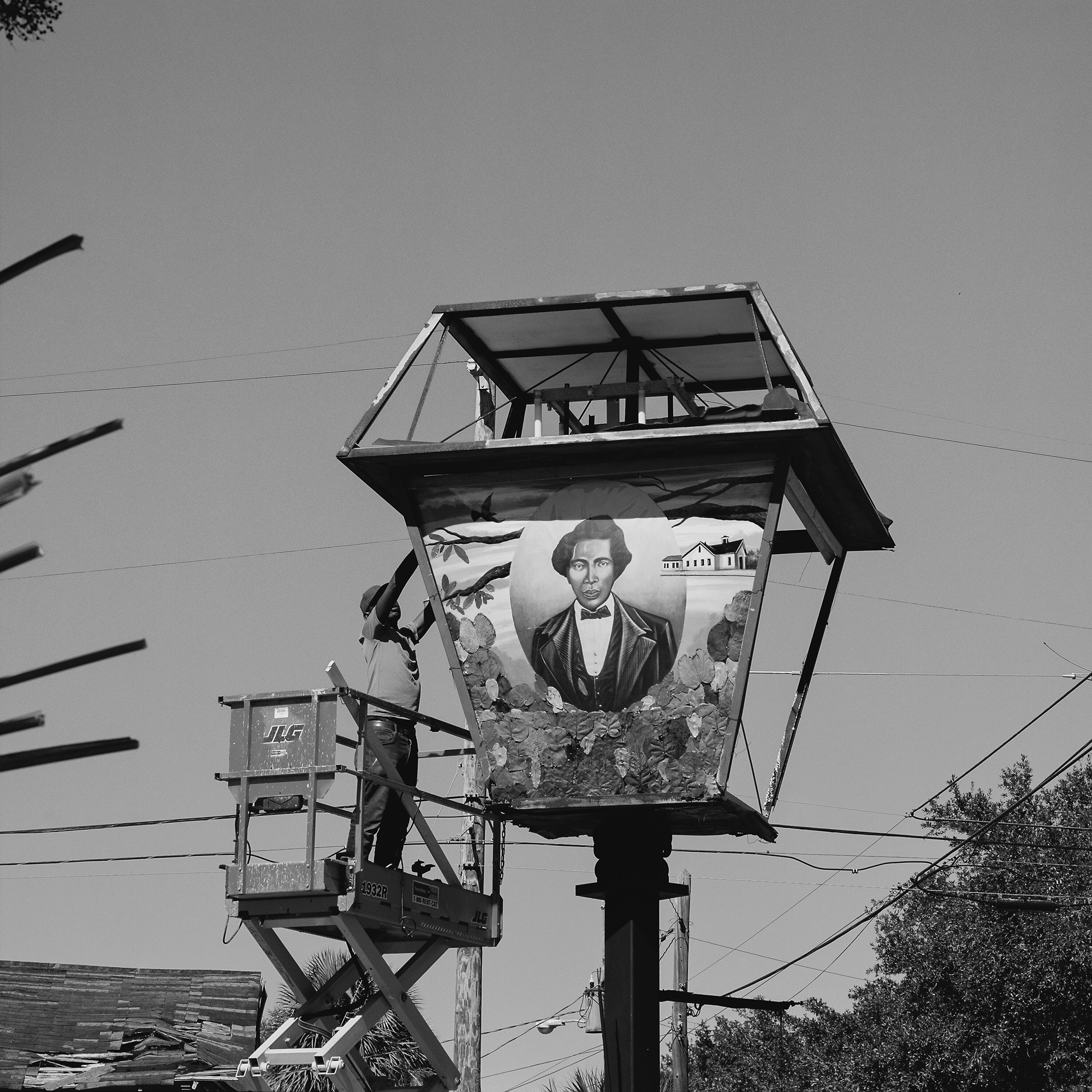
Eventually, several of the A Better Glynn canvassing teams convene in Brunswick’s largely white Old Town Historic District. The trees here are even bigger, the Spanish moss even more dramatic than in Satilla Shores. There’s a live oak here that’s believed to date to the 12th century. Richards asks a friend who grew up in the neighborhood, a white woman named Taylor Ritz who unsuccessfully ran for county commission last year as a Democrat and volunteers with A Better Glynn, to lead the group toward Hanover Square so the kids can see the Confederate statue.
This is one of the prettiest spots in Brunswick, like a Midnight in the Garden of Good and Evil-themed video-meeting backdrop. In the square, a small Black man is bent at the waist, tugging at the bottom of the statue’s plastic shroud. When Richards, Ritz, Henderson and the kids get close, Richards starts to explain what lies beneath. The man stands upright. He says he’s sure the statue is just being cleaned or repaired.
“No, actually, it’s going to be removed,” Richards says. “We hope sometime this year.”
“Oh, wow. That’s really sad,” the man says. He was born to Black American parents in France but grew up in Tennessee, he explains, and he says he’d like to see the statue remain, in keeping with “our founders’” ideals, he says. Richards, who stands about a foot taller than the man and seems to command almost every space I see him in, calmly tells him there are high school students present, tries to explain what was happening in the U.S. at the time the statue was erected and what the statue celebrates.
But the man tells the A Better Glynn group that he does not believe the enslaved were all that badly treated. He’s certain that slaveholders were shrewd businesspeople who “had to make an incredible investment,” so “why would you mistreat it.”
Most of the people in the group the man is talking to, including myself and likely him, are directly descended from the its in that sentence, the so-called “investments.” Henderson and Richards try to counter, explaining that the myth of the happy slave is contradicted by thousands of narratives collected from still-living but once enslaved people in the 1930s, stories that detail rapes, beatings, the sale of small babies and old men, the lasting trauma of exploitation. Whatever he has read is, Henderson, a minister and manager of electricians, says, wrong. But there is no convincing him. He also refuses voting information, saying he believes that Christians like himself should not engage but instead trust that those in power will guide public matters in the direction envisioned by the founders. Richards begins working to cut the conversation off. He’s promised the teenagers’ parents he’ll have them back, safe, at a specific time.
“I left feeling like there’s a ton of education work left to be done,” Richards says later.
When we reconvene with some of the other teams outside the high school, talk about the incident at Hanover Square begins. Vaughn shares that when he was a college student in Georgia, he had a history class where the professor repeatedly insisted that many of the same things expressed by the man in the park were true. Now, Vaughn is the one teaching, and making sure to get it right. A few years ago, he revived a dormant African American history elective course at Brunswick High. He needed 15 kids for a class but 147 signed up. The class has been filled ever since. Next year, the coach is hoping to take a group of students on what he calls a “Justice Journey,” visits by bus to significant places in civil rights history. The Lorraine Motel in Memphis, the 16th Street Baptist Church in Birmingham, Ala.; Central High School in Little Rock, Ark. These are places where young people suffered, experienced tragedy and violent racism but also helped to transform America.
It might be possible here, too. Richards, who was born and raised here and still owns a home in College Park even as he serves as a pastor at a historically significant Black church in Arkansas, predicts big things for the upcoming mayoral election. The last time there was a mayor’s race on the ballot, just 578 people participated, with 97% voting for the incumbent, Harvey. This time, it’s a slate of eight contenders. (Harvey did not seek re-election this year, due to term limits.) Three days before the election, Richards predicts that turnout will double—in part because there’s no incumbent and in part because of the work of A Better Glynn and other groups.
On Nov. 3, 1,529 of Brunswick’s 8,891 registered voters cast ballots in the mayoral election. Though the race went to a runoff, which will be held Nov. 30, that statistic was still satisfying: a 165% increase in turnout, and more than the under 15% average participation rate in the 30 largest U.S. cities’ most recent municipal elections, according to data analyzed by Who Votes for Mayor?, a project of Portland State University.
The people involved with A Better Glynn and people who have been doing similar work for many years are after one thing, ultimately, Richards says: “We’re looking to shape a more equitable community.”
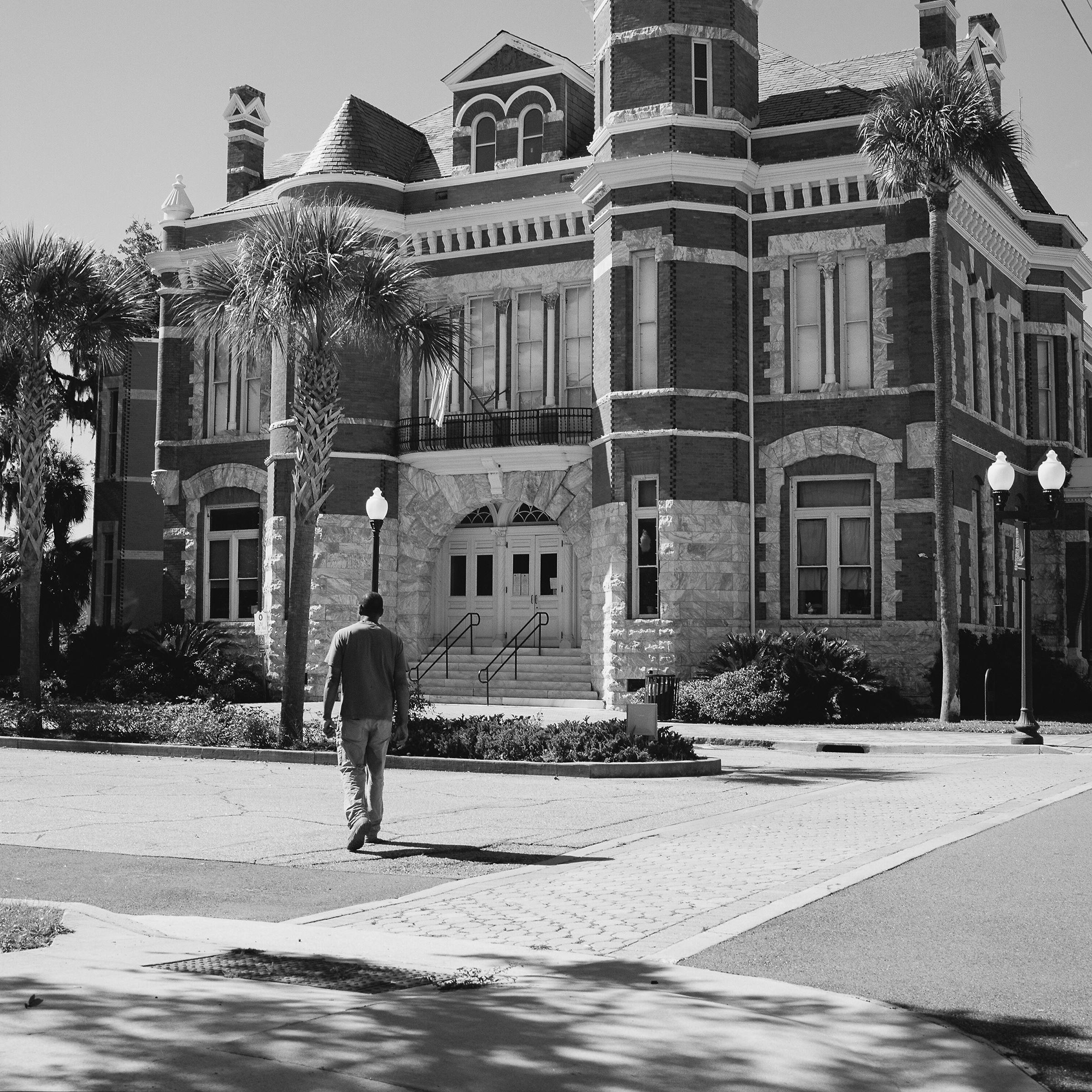
On Feb. 23, 2020, Ahmaud Arbery, 25, jogged down the driveway of the light gray house with the blue shutters that he shared with his mother in a subdivision on the east side of Georgia Highway 17, just outside Brunswick. Arbery’s mother, Wanda Cooper-Jones, can’t bear to live there now, she’s told relatives. It would not have taken Arbery long to jog down Fancy Bluff Road, or to cross a flat, four-lane portion of the Jekyll Island Causeway, where Fancy Bluff Road becomes Satilla Drive. He and the men charged with his death live close, yet so far apart.
Gregory McMichael, Travis McMichael and Bryan confronted Arbery near a corner where, had he rounded it, the flag at the entrance to Satilla Shores would have been almost in sight.
The day Arbery was killed, Bobby Henderson, the community activist and a former Navy man, was at a party, celebrating a friend who had just become an ordained minister. A Facebook alert flashed on his phone. He can still repeat the first Brunswick News headline about the shooting almost verbatim.
Read more: In the Kyle Rittenhouse Trial, Self-Defense Takes Center Stage
“The message says, ‘Home invader shot in Satilla Shores.’ And that’s saddening in and of itself,” Henderson tells me while seated in Queen Square, a pocket greenspace across the street from Old City Hall. He has five sons, the eldest of whom worked his first job with Arbery at McDonald’s. “But what’s more saddening is the reaction by the community, where there’s a celebration. There is ‘Someone took out their own trash.’ There’s ‘Another one bites the dust.’ ‘I’ll bet he won’t do it again.’ “He’s teaching a lesson to everybody else.’ So, the community is celebrating that someone just lost their life.”
“What's more saddening is the reaction by the community”
In the intervening months between Arbery’s killing and the conclusion of the three men’s trial the day before Thanksgiving, some things have changed in Glynn County. Community groups like A Better Glynn have formed. The College of Coastal Georgia, where economist Melissa Trussell observed the disparities in the community, has started new programs that aim to bolster social connections and bridge those economic gaps. A statue is coming down; new names fill the roster of public officials; some white residents have realized the danger of inequality; young Black men have begun to see their place in history and in shaping their own community. But the facts of that history remain, deep as the roots of those live oaks. The men who killed Arbery were found guilty. The people who live across the street from the home Arbery left that February afternoon fly an American flag with a weathered Gadsden banner just below. It reads Don’t Tread On Me.
“It’s beyond ‘Justice for ’Maud,’” Henderson says. “The media is going to go away. All of the national attention is going to go away. We’re going to be stuck with these systems. We’ve got to change the systems.”
—With reporting by Leslie Dickstein and Simmone Shah
More Must-Reads From TIME
- The 100 Most Influential People of 2024
- Coco Gauff Is Playing for Herself Now
- Scenes From Pro-Palestinian Encampments Across U.S. Universities
- 6 Compliments That Land Every Time
- If You're Dating Right Now , You're Brave: Column
- The AI That Could Heal a Divided Internet
- Fallout Is a Brilliant Model for the Future of Video Game Adaptations
- Want Weekly Recs on What to Watch, Read, and More? Sign Up for Worth Your Time
Contact us at letters@time.com